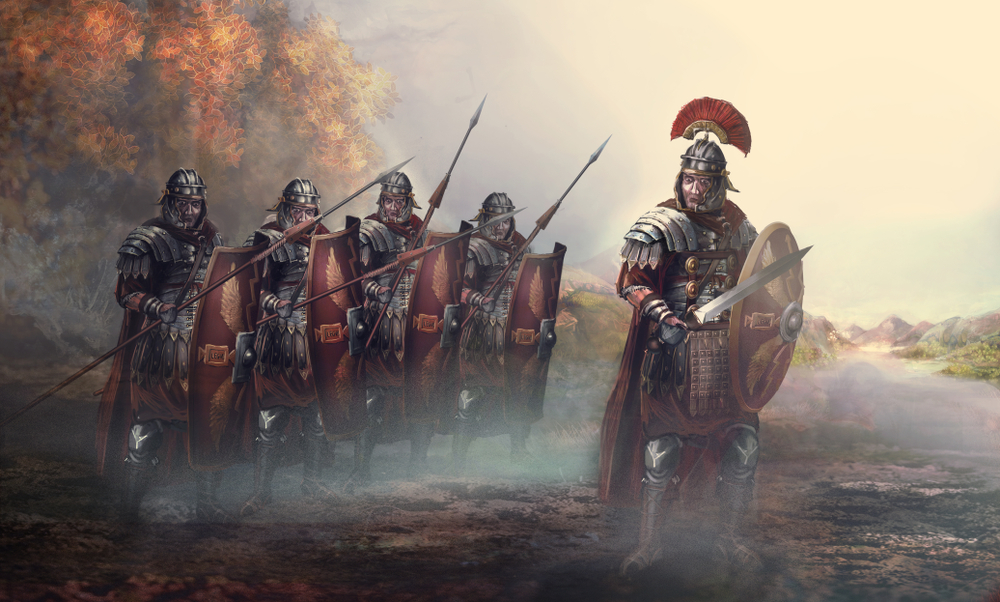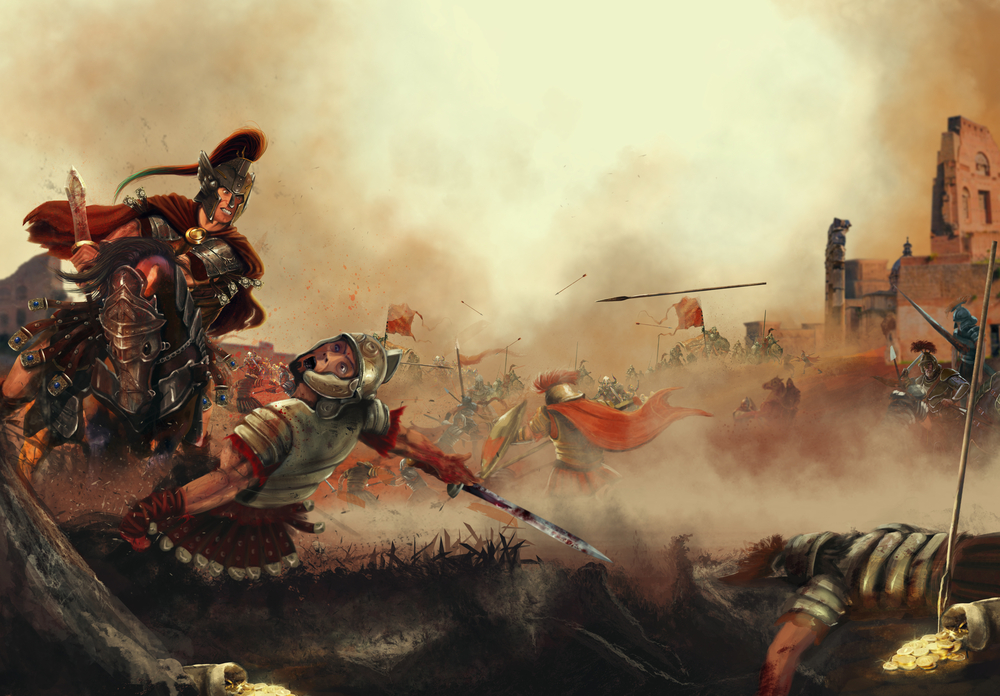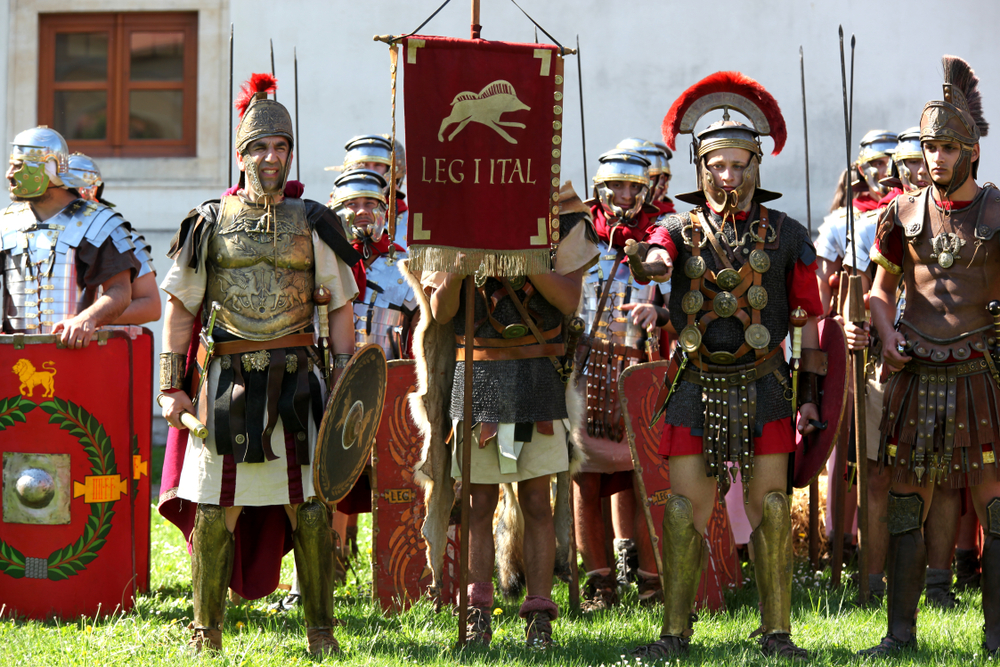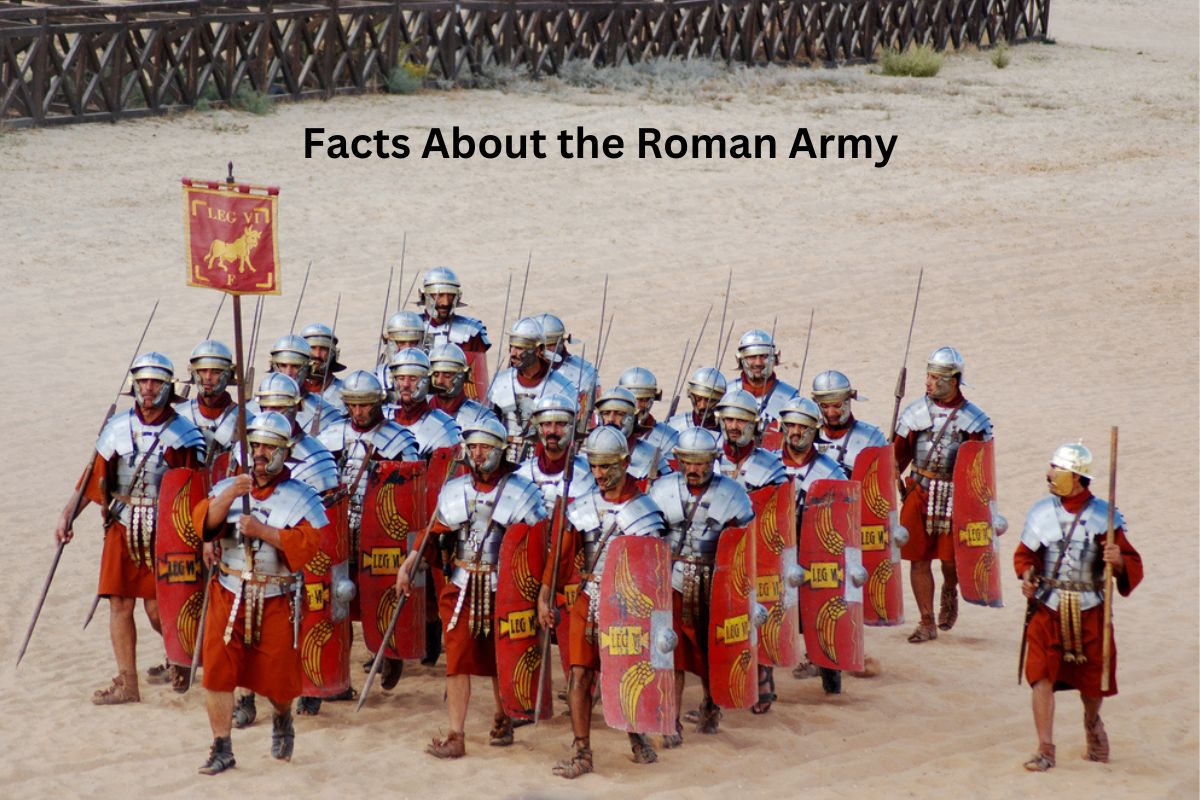The Roman army, one of the most formidable military forces of the ancient world, played a crucial role in shaping the Roman Empire’s rise to power and its subsequent dominance.
Known for its disciplined soldiers, tactical prowess, and well-organized structure, the Roman army was a formidable force on the battlefield.
Comprised of legions and supported by auxiliary troops, the Roman army employed standardized equipment, utilized tactical formations, and excelled in siege warfare.
Additionally, the army’s logistical network ensured the steady supply of provisions and reinforcements. While the Roman army spread Roman culture through its presence and faced various challenges, its impact on ancient history remains significant.
Roman Army Facts
1. Organized into legions
The Roman army was structured into legions, which were the primary military units. A legion consisted of around 5,000 infantry soldiers known as legionaries.
Legions were numbered and often given names, such as Legio I (First Legion) or Legio X Fretensis (Tenth Legion of the Strait). Each legion had its own distinctive standards, symbols, and history, fostering a sense of identity and camaraderie among its soldiers.

2. Strict discipline
The Roman army was renowned for its strict discipline, which played a crucial role in maintaining order and effectiveness on the battlefield. Soldiers were subjected to a rigid code of conduct, known as the military oath (sacramentum).
This code demanded absolute loyalty to the Roman state, obedience to superiors, and adherence to regulations. Violations of discipline were met with severe punishments, including flogging, fines, imprisonment, and in extreme cases, execution.
3. Rigorous training
Roman soldiers underwent rigorous training to prepare them physically, mentally, and tactically for warfare. Training took place in specialized military camps called castra, where soldiers engaged in physical exercises, weapon drills, and mock battles.
Training emphasized endurance, marching, formation drills, and mastering their weapons, such as the gladius (short sword) and scutum (shield). Additionally, soldiers learned essential skills like fortification construction, engineering, and siege warfare techniques.
4. Standardized equipment
The Roman legionaries were equipped with standardized gear, which contributed to their effectiveness and cohesion on the battlefield.
The primary weapon of the legionary was the gladius, a short stabbing sword designed for close-quarters combat.
They also carried a rectangular shield called a scutum, which provided excellent protection. The legionaries wore armor, including a helmet (galea), breastplate (lorica), and greaves (ocreae) to protect their legs.
This standardized equipment ensured uniformity and allowed for synchronized movements and formations.

5. Utilized tactical formations
The Roman army employed various tactical formations that played a crucial role in their success in battle. One of the most famous formations was the “maniple system.”
In this system, the legion was divided into maniples, which were smaller units of around 120 men. Maniples could maneuver independently, providing flexibility and adaptability on the battlefield.
The Roman army also utilized formations like the phalanx, which involved soldiers forming a tight formation with shields locked together, and the famous Testudo (tortoise) formation, where soldiers interlocked their shields above their heads for protection.
6. Skilled in siege warfare
The Roman army was highly skilled in siege warfare, enabling them to conquer fortified cities and hold their own against sieges. They developed advanced siege engines and tactics to overcome enemy defenses.
Siege engines included battering rams to break down gates and walls, siege towers to allow soldiers to scale walls, and ballistae and catapults for long-range bombardment.
The Roman army also had specialized soldiers called engineers who were responsible for designing, constructing, and operating these machines. They would dig tunnels, build ramps, and use other innovative techniques to breach enemy fortifications.
7. Included auxiliary troops
Alongside the legionaries, the Roman army relied on auxiliary troops recruited from non-Roman peoples to supplement their forces. These auxiliary troops came from different regions and served in various roles, such as cavalry (equites), archers (sagittarii), and skirmishers (velites).
They provided specialized skills and knowledge of local terrain, adding diversity and versatility to the Roman army. Auxiliary troops played a significant role in expanding and maintaining the Roman Empire, often earning Roman citizenship after their service.
8. Had an extensive logistics system
The Roman army had a well-developed logistics system to ensure the smooth supply of provisions, equipment, and reinforcements.
The Romans built an extensive network of roads, such as the famous Appian Way, which facilitated the movement of troops and supplies throughout the empire.
They constructed granaries and supply depots strategically located along major routes to store food, weapons, and other necessary resources. This logistical infrastructure enabled the Roman army to sustain long campaigns and project power across vast distances.

9. Spread Roman culture through military presence
The Roman army played a significant role in spreading Roman culture and civilization throughout the territories they conquered.
Soldiers stationed in different regions often formed relationships with local women and married them, leading to cultural exchange and the adoption of Roman customs by local populations.
Additionally, the presence of Roman military installations, roads, and administration in conquered territories facilitated the dissemination of Roman language, law, architecture, and other aspects of Roman culture.
10. Declined due to various factors
The Roman army, like the Western Roman Empire, faced numerous challenges that contributed to its decline. Internal factors such as political instability, corruption, and economic crises weakened the empire from within.
The constant need to defend and expand the borders against barbarian invasions put a strain on resources and manpower.
Additionally, the changing nature of warfare, including the use of mounted cavalry and more agile enemy forces, posed challenges to the traditional Roman military tactics. The decline of the Western Roman Empire ultimately resulted in the disintegration of its military might and the end of the Roman army as a dominant force.
